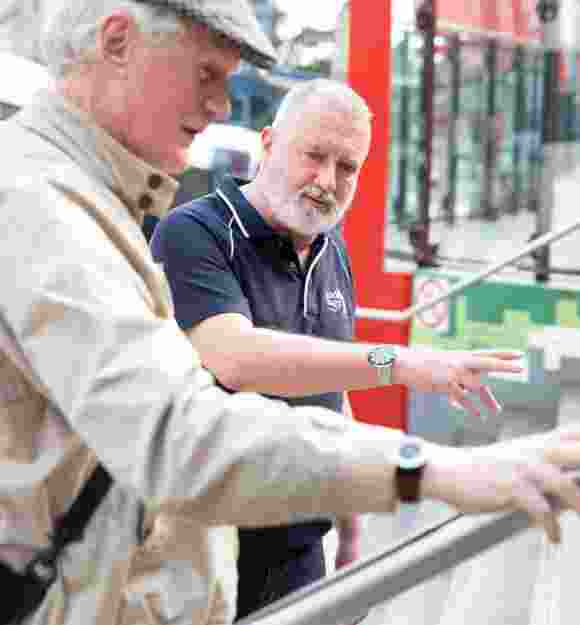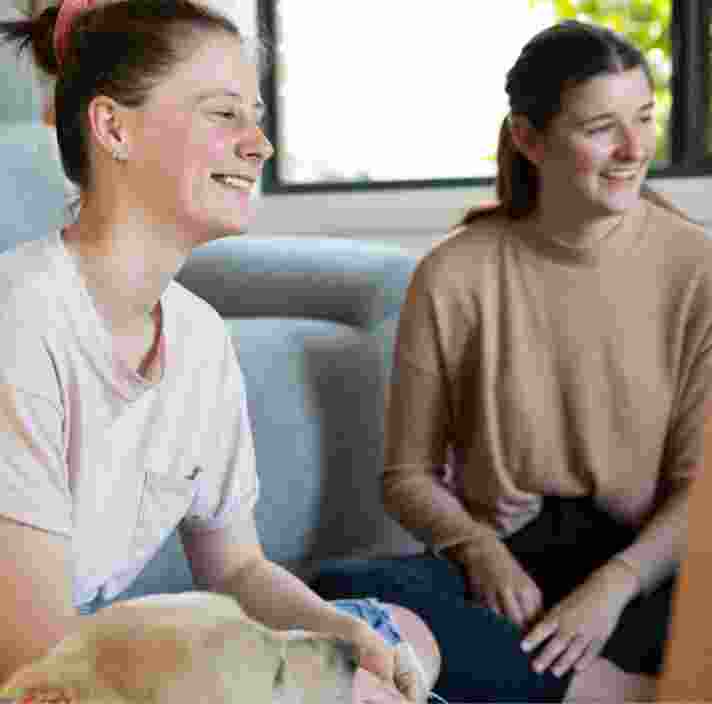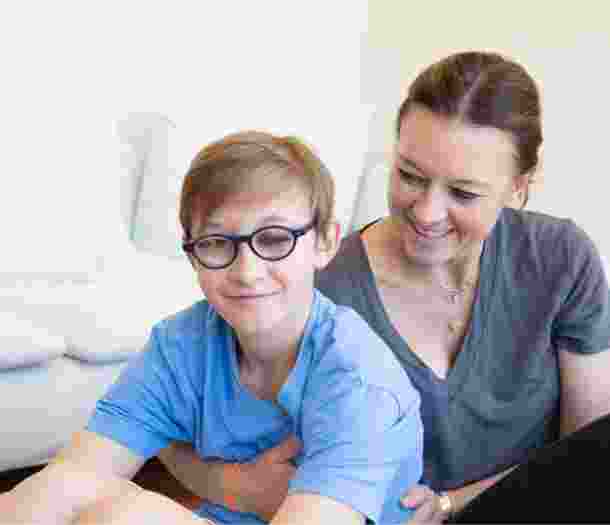On this page:
About low vision
Whether it be through accident, illness, injury, genetic inheritance or an ongoing condition, anyone can experience vision loss at any time.
Conditions that cause vision loss
Some common types of vision loss and how they can affect a person’s mobility and independence:
Cataract
As we age, the lens in our eyes we use to focus can become cloudy and hardened. The hardening results in a cataract. With a cataract, you may struggle to focus on reading the labels in your pantry, distinguishing colours or find it challenging to work in the garden due to sensitivity from the sun.
Many people successfully restore their vision when the cataract is surgically removed.
Glaucoma
Glaucoma causes damage to the optic nerve, resulting in reduced vision or complete vision loss. The eye continually produces fluid that needs to drain out. If the process is interrupted, pressure builds up in the eye. It can be chronic and if left untreated can result in tunnel vision or total vision loss.
When glaucoma is detected, a specialist will assist in managing this pressure to avoid loss of vision.
Diabetic retinopathy
Diabetic retinopathy is an eye condition related to diabetes. Changes to the blood vessels in the retina cause vision loss. Blurred, distorted vision or even complete vision loss may occur.
You may experience random patches of vision loss or blurred vision that affects your ability to see road signs or judge the traffic. It is important to visit an ophthalmologist in order to maintain the health of eyes when you have diabetes.

Retinitis Pigmentosa
Retinitis pigmentosa (RP) is a progressive, chronic, inherited condition. It causes the breakdown of retinal cells that normally receive light. Eventually RP progresses to loss of peripheral vision, commonly referred to as tunnel vision.
Early symptoms include night vision loss, knocking into things, tripping over and perhaps a feeling of general clumsiness.
Macular degeneration
Macular degeneration, also known as Age Related Macular Degeneration (ARMD) is the most common cause of vision loss in people over the age of 60 years.
The retina has a central area called the macular. When the macular develops eye disease such as ARMD then a loss of central vision is experienced.
Although a person with this condition still has peripheral vision, it can lead to difficulties with identifying faces, problems recognising colour or difficulty reading the mail.
Assisting a person with low vision or blindness
There are many ways you can support and assist a person with low vision or blindness, whether you know them well or if you’re meeting for the first time.
- You should never assume a person with low vision requires assistance without first asking them: Would you like help?
- Always introduce yourself, even if you’ve met the person before. They may know who you are, but they may not recognise your voice alone without context. You don’t need to raise your voice. Just speak clearly.
- If you have to move away while talking to a person with low vision or blindness, tell them you are leaving the conversation, so they’re not left talking to themselves.
- It’s okay to use words like see, look and watch in general conversation. People with low vision use those words themselves.
- If you’re giving directions, use phrases like behind you on your left, or in front of you and to the right. Using a clock face to describe the features of a room is useful too: The door is to your right at 2 o’clock. General terms like over there or that way aren’t as helpful for a person with low vison.
- Try to inform a person with low vision if you give them something. For example, if you give them a drink, say I am putting a cup next to your right hand.
Assisting in group situations
How to assist a person with vision loss in group situations.
If you are in a group of people and are aware a person has low vision or blindness, tell them the names of the people in the group. Clearly use each person’s name when you talk, so it is clear who is speaking and interacting.
If you want or need information from a person who has low vision, ask the person directly. Do not ask another person to answer on their behalf.
Assisting a person with a Guide Dog
It’s important that you don’t pat or talk to a Guide Dog if it is wearing a harness.
If a person with vision loss has a Guide Dog, It’s important that you don’t pat or talk to the dog if it is wearing a harness.
The harness is a signal that the dog is working. Interacting with a working Guide Dog can create distractions or confusion, and put their Handler’s safety at risk.
Apply for a service
Our services and support help empower our clients to fulfil their potential and live life the way they choose.
Would you like to begin your journey in finding your way with Guide Dogs? We welcome enquiries from individuals, carers, family members, and health professionals.

""It would be hard without an organisation like Guide Dogs. To think there’d be no one to help you with a white cane or a Guide Dog. It would be hard to leave the house, to have a life.""
Ready to continue?
Seems like you have filled this form earlier. Let’s pick up where you left off.

